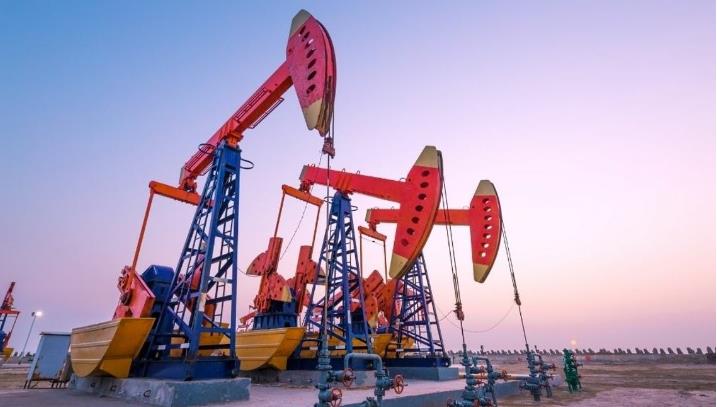Drilling engineering is a specialized field within petroleum engineering that focuses on the planning, design, execution, and management of drilling operations. The primary goal of drilling engineering is to drill wells safely, efficiently, and cost-effectively to access hydrocarbons. This discipline is essential in oil and gas exploration, where it plays a critical role in optimizing the extraction of resources while minimizing environmental impact and ensuring operational safety.

Core Functions of Drilling Engineering
Drilling engineering covers several core functions that ensure the successful completion of a well. These include:
Well Planning and Design: This is the foundational step in which engineers decide on the well’s location, trajectory, and depth. During planning, engineers use geological and geophysical data to optimize well placement and maximize reservoir contact. They also consider factors like well integrity, cost constraints, and potential environmental hazards.
Drilling Fluid Management: Drilling fluids, also known as "drilling mud," are essential for maintaining well stability, cooling the drill bit, carrying cuttings to the surface, and balancing formation pressures. Engineers design these fluids based on the specific conditions of each well to ensure efficiency and safety.
Drilling Equipment Selection: Engineers select specialized equipment, such as drill bits, drill pipes, and bottom-hole assemblies, based on the formation's characteristics. Each piece of equipment must be compatible with the geological and operational conditions, as well as the desired trajectory of the well.
Pressure Control and Well Integrity: Pressure control is crucial in drilling operations to prevent incidents like blowouts. Engineers use blowout preventers (BOPs) and maintain well integrity through proper casing and cementing to prevent uncontrolled flow of fluids into the wellbore.
Drilling Techniques and Methods
Different drilling methods are employed based on the type of formation and the depth of the reservoir:
Rotary Drilling: The most commonly used method, rotary drilling employs a rotating drill bit to cut through rock formations. The rotation is achieved through a rotary table on the rig floor or a top drive, and drilling mud is circulated to cool the bit and carry rock cuttings to the surface.
Directional Drilling: This technique allows engineers to drill at angles rather than just vertically. Directional drilling is essential for accessing reservoirs that are not directly below the drilling site and is commonly used in offshore drilling.
Horizontal Drilling: Horizontal drilling is a form of directional drilling where the wellbore is turned horizontal to increase the surface area in contact with the reservoir. This method is highly effective in unconventional reservoirs, such as shale plays, where it enables greater access to hydrocarbon-rich zones.
Managed Pressure Drilling (MPD): MPD is a specialized technique that allows for better control over downhole pressures, reducing the risk of formation damage and blowouts. This method is especially useful in complex geological conditions.

Drilling Challenges and Solutions
Drilling operations come with a variety of challenges that require innovative solutions:
High-Temperature and High-Pressure (HTHP) Environments: Drilling in extreme environments requires advanced materials and equipment to withstand high temperatures and pressures without failure. HTHP wells often require specialized drilling fluids, advanced sensors, and enhanced drilling tools.
Unconventional Reservoirs: Extracting oil and gas from unconventional reservoirs, such as shale formations, requires complex drilling techniques like hydraulic fracturing combined with horizontal drilling. Engineers must manage wellbore stability, proppant placement, and pressure to ensure successful extraction.
Deepwater Drilling: In offshore drilling, deepwater and ultra-deepwater wells present logistical and technical challenges. Engineers use remotely operated vehicles (ROVs) and advanced monitoring systems to handle these operations, often deploying specialized rigs designed for deepwater conditions.
Environmental and Safety Concerns: Reducing the environmental impact and ensuring the safety of workers is a top priority. Drilling engineers are developing eco-friendly drilling fluids, implementing best practices in well control, and adhering to strict regulatory standards to mitigate environmental risks.
Innovations and Future Trends in Drilling Engineering
The future of drilling engineering is shaped by technological advancements that improve efficiency, safety, and environmental sustainability. Key trends include:
Automation and Digitalization: Automation is revolutionizing drilling operations by enabling real-time data collection, remote monitoring, and predictive maintenance. Digital twins—virtual models of the drilling process—allow engineers to simulate various scenarios and optimize drilling performance.
Enhanced Drilling Sensors: Modern wells use an array of sensors that monitor temperature, pressure, and vibration levels in real-time. Advanced measurement-while-drilling (MWD) and logging-while-drilling (LWD) technologies provide continuous data on subsurface conditions, allowing for better decision-making.
Top Drive Drilling Systems: These systems provide a safer and more efficient alternative to traditional rotary tables by directly rotating the drill string from the top. Top drive systems are particularly beneficial in complex wells, where they allow for easier control over drilling speed and torque.
Sustainable Drilling Practices: With the global push for sustainability, drilling engineering is focusing on minimizing emissions, reducing the use of non-recyclable materials, and implementing energy-efficient practices. For example, advanced water-based muds are being developed as eco-friendly alternatives to oil-based muds.
Advanced Geosteering Technologies: Geosteering is the process of adjusting the well trajectory in real-time based on geological data. Advanced geosteering technologies use seismic and LWD data to steer the drill bit more precisely, maximizing reservoir exposure.
Drilling Software: Drilling Software refers to specialized tools that streamline planning, monitoring, and optimizing drilling operations in industries like oil and gas. It enables engineers to design well trajectories, monitor real-time data, and simulate drilling parameters such as pressure and rate of penetration. With capabilities like geosteering, automated risk assessment, and performance analysis, drilling software enhances safety, reduces operational costs, and supports efficient, data-driven decision-making. Integrating advanced technologies such as AI and machine learning, drilling software is pivotal for achieving precision, safety, and sustainability in modern drilling projects.

Career and Industry Outlook
Drilling engineers are in demand globally, especially in regions with rich hydrocarbon reserves. As the industry evolves to meet environmental regulations and the demand for energy efficiency, there is a growing need for engineers skilled in emerging technologies like automation, data analysis, and sustainability-focused drilling methods. In addition to traditional oil and gas applications, drilling engineering skills are also valuable in geothermal energy extraction, water well drilling, and carbon capture and storage (CCS) projects.
In summary, drilling engineering is an essential field that combines engineering principles, geological knowledge, and technological innovation. From traditional drilling to advanced techniques, drilling engineers are instrumental in safely and efficiently tapping into the Earth’s energy resources. As the industry continues to evolve, innovations in automation, digitalization, and sustainability will redefine the future of drilling engineering, making it a dynamic and impactful career path for engineers passionate about the energy sector.







